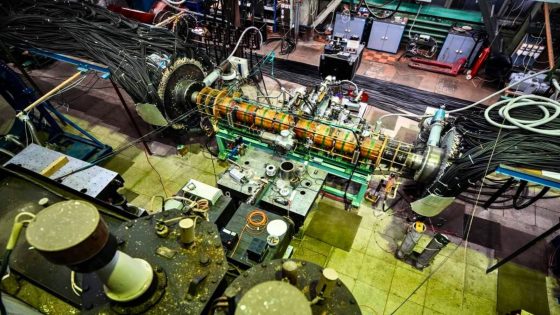Russian scientists have developed an innovative plasma engine that could revolutionize space travel by cutting the journey to Mars down to just 30 days. Announced on February 11, 2025, this breakthrough raises exciting possibilities for interplanetary exploration. But can this technology truly deliver on its promises, or is it merely a futuristic fantasy?
- New plasma engine could shorten Mars travel time.
- Developed by Rosatom’s Troitsk Institute.
- Uses hydrogen ions for efficient propulsion.
- Prototype undergoing ground tests currently.
- Expected flight-ready model by 2030.
- Challenges include verification and energy sources.
How a Plasma Engine Could Transform Space Travel for Americans
Could this new plasma engine change the way we explore Mars? The technology promises to slash travel time from months to just weeks, making it a game-changer for future missions. As the U.S. looks to enhance its space exploration capabilities, this innovation could play a crucial role in upcoming Mars expeditions.
What Makes This Plasma Engine Different from Current Rockets?
The plasma engine, developed by Rosatom, operates on a fundamentally different principle than traditional rockets. Instead of relying on chemical combustion, it uses electromagnetic fields to accelerate hydrogen ions, achieving speeds of up to 100 km/s. This continuous thrust allows for steady acceleration, unlike conventional rockets that coast after an initial burst. Here are some key features:
- Continuous thrust for sustained acceleration.
- Hydrogen as a lightweight and efficient propellant.
- Reduced wear on engine components due to lower heat generation.
- Potential to serve as a space tug for faster cargo transport.
The Testing Phase: Is It Ready for Space?
Rosatom has already constructed a working prototype of the plasma engine, which is undergoing rigorous ground tests. This prototype operates within a vacuum chamber that simulates space conditions. With a power output of 300 kW and a lifespan of 2,400 hours, it appears capable of supporting a Mars mission. However, the integration of this technology into actual spacecraft remains a challenge.
Hydrogen: The Ideal Fuel for Space Travel
Hydrogen is the primary propellant for the plasma engine, and its advantages are significant. As the most abundant element in the universe, it’s lightweight, allowing for efficient acceleration. Additionally, its lower heat generation means less wear on engine components, making it a smart choice for long-duration space missions. This could lead to more sustainable exploration efforts.
Challenges Ahead: Can This Technology Deliver?
While the prospect of a 30-day journey to Mars is thrilling, several hurdles must be overcome. Independent verification of the engine’s performance is essential, as no peer-reviewed studies have yet confirmed its capabilities. Moreover, integrating this engine into future spacecraft and ensuring a reliable energy source will be critical for its success. Despite these challenges, the potential for faster Mars missions is closer than ever.
As we look to the stars, innovations like this plasma engine could usher in a new era of space exploration. What do you think about the future of interplanetary travel? Share your thoughts in the comments!






























![Will Avalanche [AVAX] Plunge Further? Bears Set Sights on $14.5 Support!](https://news.faharas.net/wp-content/uploads/2025/03/Will-Avalanche-AVAX-Plunge-Further-Bears-Set-Sights-on-145.webp.webp)


